Explore Pune’s Hidden Gems! Discover The 5 Best Places to Visit in Pune, blending history, nature, and adventure. Dive into this vibrant city’s lesser-known treasures.
Introduction
Are you ready to embark on a journey through the vibrant and culturally rich city of Pune? If you’re seeking adventure, history, and an unforgettable experience, you’ve come to the right place!
Pune, often referred to as the “Oxford of the East” due to its esteemed educational institutions, has so much more to offer than just books and classrooms.
It’s a city that seamlessly blends tradition with modernity, offering a treasure trove of experiences for every type of traveler.
In this guide, we’ll uncover the five best places to visit in Pune that will make your trip truly memorable. Get ready to explore, indulge, and immerse yourself in the heart of Maharashtra!
Dive into Pune’s Colorful Tapestry
Pune is a kaleidoscope of history, culture, and natural beauty. From ancient forts to bustling markets, there’s something for everyone in this vibrant city.
Whether you’re a history buff, a nature enthusiast, or a foodie, Pune’s got you covered. So, without further ado, let’s dive right into the five best places to visit in Pune!
Shaniwar Wada: Pune’s Historical Marvel
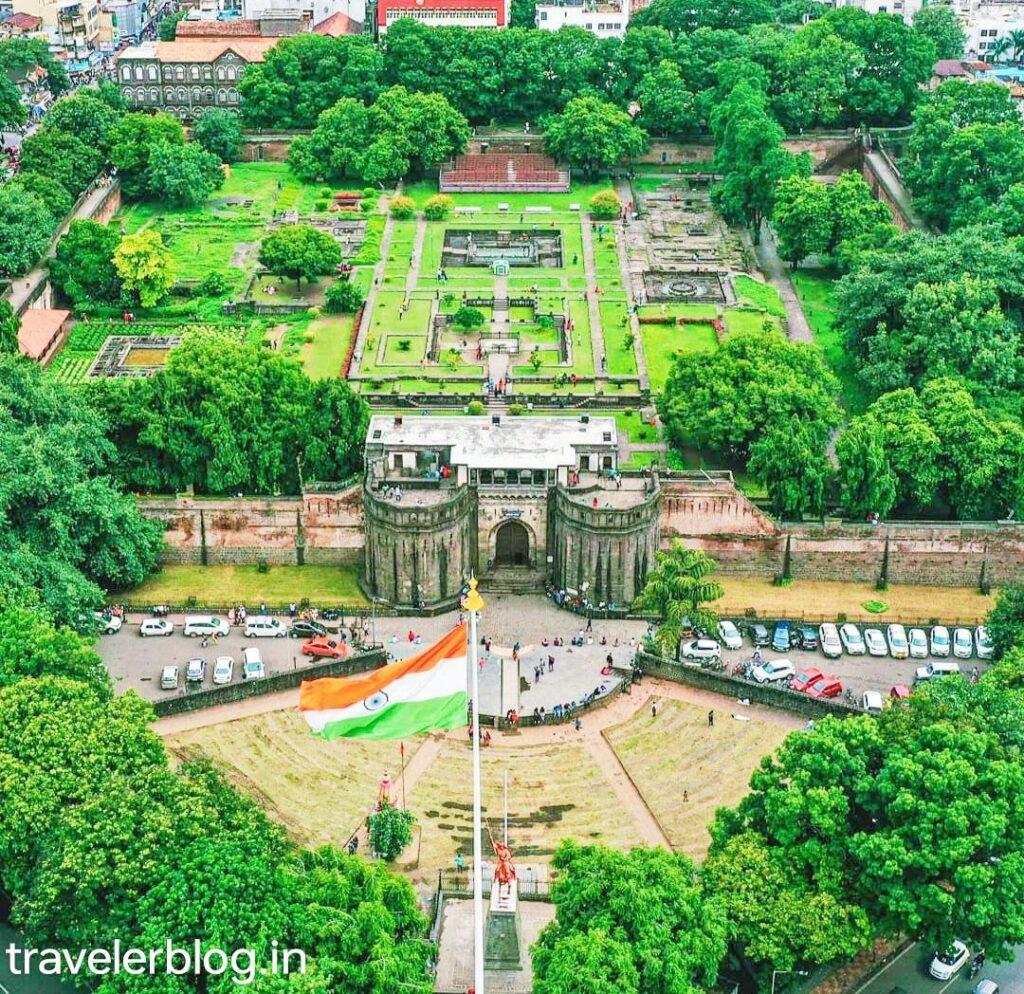
Shaniwar Wada is a historical fortification located in Pune, Maharashtra, India. It was constructed in 1730 on the banks of the Mutha River and
served as the seat of the Peshwas, who were the prime ministers of the Maratha Empire.
Key highlights of Shaniwar Wada include:
Historical Significance: Shaniwar Wada holds immense historical significance as it was the center of Maratha politics during the Peshwa rule.
It played a pivotal role in the administration and governance of the Maratha Empire.
Architectural Grandeur: The fort originally featured impressive architecture with intricately designed gates, walls, and buildings.
Unfortunately, much of it was destroyed in a fire in 1828, but the remains still exhibit the grandeur of its past.
Haunted Legends: Shaniwar Wada is also famous for its supposed haunted status. Legends suggest that the ghost of the young Peshwa Narayanrao,
who was murdered in the fort, haunts the premises. This has led to its reputation as one of India’s haunted places.
Tourist Attraction: Today, Shaniwar Wada is a popular tourist attraction in Pune, drawing visitors interested in history and architecture.
The light and sound show held here narrates its history and adds to the visitor experience.
Cultural Significance: The fort is an important cultural symbol in Pune and a reminder of the city’s rich heritage.
It reflects the glorious era of the Marathas and their influence on the region.
Despite some parts being in ruins, Shaniwar Wada remains a historical marvel, offering a glimpse into India’s colonial history and the Maratha Empire’s legacy.
If history sends a thrill down your spine, Shaniwar Wada should be your first stop. Built in 1732, this architectural masterpiece was once the seat of the Peshwa rulers.
Today, it stands as a testament to Pune’s rich past. Here’s what you can expect:
History Comes Alive: Walk through the imposing gates of Shaniwar Wada and you’ll be transported back in time.
The fort’s intricate lattice work, ancient walls, and the remnants of the palace tell stories of bygone eras.
Light and Sound Show: Don’t miss the captivating light and sound show that narrates the history of the fort. It’s an enchanting experience that makes history truly come alive.
Haunting Legends: Be sure to ask your guide about the mysterious stories and legends associated with Shaniwar Wada, including tales of ghosts that wander its premises at night!
Also read – Ganpatipule Temple – Uncover the Hidden Gem of India’s Western Coast!
Dagduseth Halwai Ganapati Temple
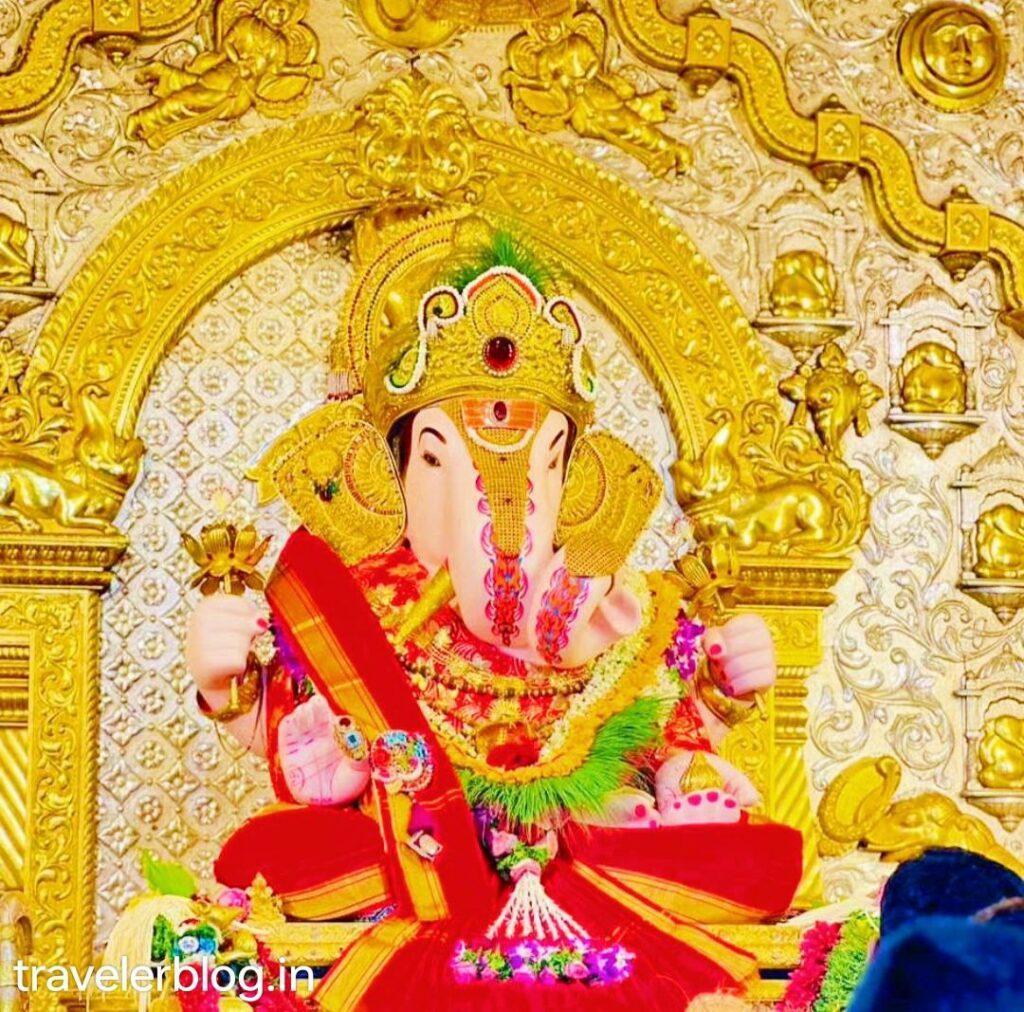
Dagduseth Halwai Ganapati Temple, located in Pune, Maharashtra, is a revered Hindu temple dedicated to Lord Ganesha. Here’s what you should know about this historic temple:
Founding Story: The temple was established by a sweet seller named Dagduseth Halwai and his wife Lakshmibai in the late 19th century.
They built the temple in memory of their son who had succumbed to the plague epidemic. Lord Ganesha is the presiding deity, and the temple serves as a place of devotion and solace for many.
Architecture: The temple features an intricate and beautiful architectural design. The idol of Lord Ganesha in the temple is adorned with ornaments and is a sight to behold.
The temple’s grandeur attracts not only devotees but also tourists interested in its architectural splendor.
Devotee Visits: Devotees from Pune and beyond visit Dagduseth Halwai Ganapati Temple to seek blessings, offer prayers, and participate in various religious ceremonies. dagduseth ganpati trust
It is especially crowded during the Ganesh Chaturthi festival when the idol of Lord Ganesha is elaborately decorated and celebrated.
Cultural Significance: The temple is an integral part of Pune’s cultural heritage and is deeply embedded in the city’s history.
It stands as a symbol of faith, hope, and devotion for countless devotees.
Events and Celebrations: The temple hosts various events and religious celebrations throughout the year.
Ganesh Chaturthi is the most significant festival celebrated here with immense enthusiasm and fervor.
Dagduseth Halwai Ganapati Temple is not just a religious site but also a cultural icon in Pune, reflecting the rich religious and historical traditions of the region.
Also Read – Kashid Beach Resort – Where Luxury Meets Natural Beauty
Aga Khan Palace: A Serene Retreat
Aga Khan Palace: A Serene Retreat
Aga Khan Palace, located in Pune, Maharashtra, is a historic monument known for its architectural beauty and historical significance.
Here’s an overview of this iconic palace:
Historical Significance: Aga Khan Palace holds great historical importance as it served as a prison for prominent Indian freedom fighters during the British rule.
Mahatma Gandhi, his wife Kasturba Gandhi, as well as Sarojini Naidu, were among the notable figures who were interned here.
Today, it stands as a symbol of India’s struggle for independence.
Architectural Beauty: The palace is renowned for its exquisite architecture, featuring a blend of Italian and Mughal styles.
It boasts spacious lawns, elegant corridors, and intricate designs, making it a visual delight for visitors.
Gardens and Grounds: The palace is surrounded by well-maintained gardens and lush greenery. Visitors can enjoy a serene and peaceful environment while exploring the palace grounds.
Gandhi Memorabilia: Aga Khan Palace houses a museum that displays various artifacts related to Mahatma Gandhi’s life and the freedom movement.
Visitors can explore photographs, personal belongings, and documents associated with Gandhi.
Tourist Attraction: Today, the palace is a popular tourist attraction in Pune, drawing both history enthusiasts and tourists interested in its architectural splendor.
It provides a tranquil escape from the bustling city.
Timing and Entry Fee: The palace is generally open to the public, with a nominal entry fee. It’s advisable to check the official website or local sources for the latest timing and ticket prices.
Aga Khan Palace serves as a reminder of India’s struggle for independence and stands as a serene retreat that offers a glimpse into history and architectural brilliance.
Sinhagad Fort: Trekking and History Combined!
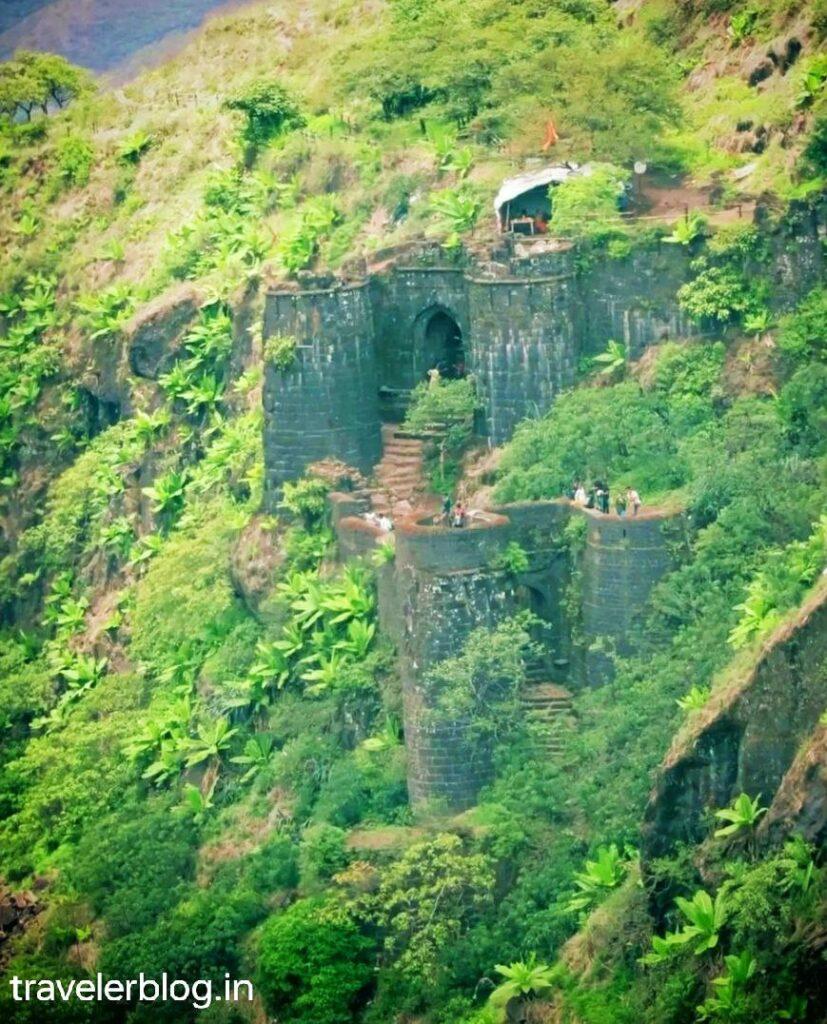
Sinhagad Fort, located near Pune, Maharashtra, is a historical gem that offers a unique blend of trekking adventures and rich history.
Here’s what you need to know about this remarkable fort:
Historical Significance: Sinhagad Fort, also known as the Lion’s Fort, has a storied history. It was once the site of a significant battle between Maratha forces led by Tanaji Malusare and the Mughal Empire.
The fort played a crucial role in Maratha history and has witnessed various rulers.
Trekking Paradise: Sinhagad is a favorite destination for trekkers and adventure enthusiasts. The trek to the fort is approximately 2.5 kilometers long,
offering both beginners and experienced trekkers a thrilling experience. Along the way, you’ll encounter scenic views and lush greenery.
Architectural Beauty: The fort itself is a testament to Maratha architecture. It features well-preserved structures, including gates, ramparts, and temples.
The Kalyan Darwaza and Pune Darwaza are notable entrances.
Bhuleshwar Temple: At the foothills of Sinhagad Fort lies the Bhuleshwar Temple, an ancient Shiva temple known for its unique architecture and historical significance.
Visiting Tips: It’s advisable to start the trek early in the morning to avoid the heat. Be prepared with comfortable trekking gear and carry water and snacks.
The fort can get crowded during weekends and holidays, so plan your visit accordingly.
Historical Insights: While exploring the fort, you can immerse yourself in history and imagine the battles that once took place here.
Information boards provide insights into the fort’s historical significance.
Sinhagad Fort offers a perfect combination of outdoor adventure and historical exploration. Whether you’re a history enthusiast or a nature lover,
this fort has something to offer, making it a must-visit destination near Pune.
Raja Dinkar Kelkar Museum: A Treasure Trove of Artifacts
If you’re curious about India’s rich heritage and want to explore it in a single place, the Raja Dinkar Kelkar Museum should be on your itinerary.
This museum houses an incredible collection of artifacts, making it one of the best places to visit in Pune.
Diverse Exhibits: From musical instruments to antique textiles, sculptures, and everyday objects, the museum showcases an extensive range of items collected by Dr. Dinkar Kelkar over a lifetime.
Traditional Beauty: The architecture of the museum itself is a work of art. It’s designed to resemble a Rajasthani palace and adds to the overall charm of the place.
Fascinating Miniatures: Don’t miss the impressive collection of traditional Indian musical instruments and the exquisite display of intricately carved ivory.
Osho International Meditation Resort: Inner Peace
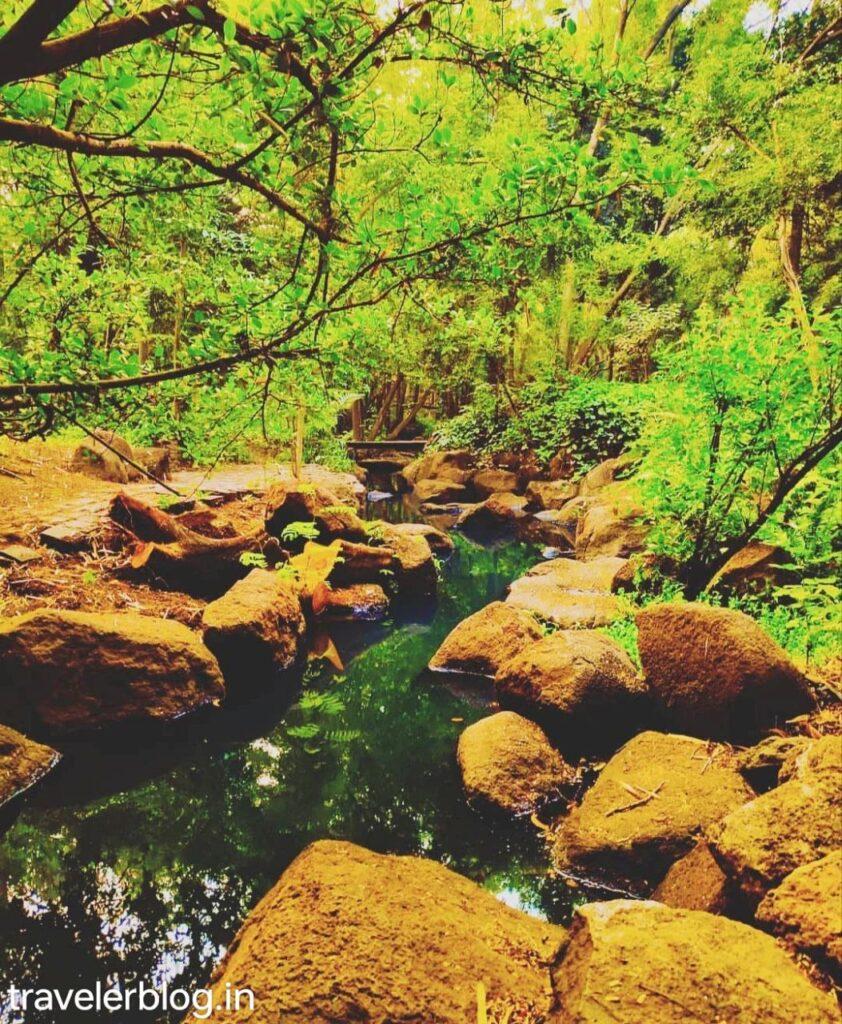
In the midst of Pune’s bustling city life lies the Osho International Meditation Resort, an oasis of tranquility.
Whether you’re a seasoned meditator or a curious novice, this place offers an unparalleled experience.
Meditation Retreat: Join one of the meditation sessions or workshops offered at the resort and discover the path to inner peace.
The lush gardens and serene surroundings create the perfect ambiance.
A Variety of Therapies: Apart from meditation, you can explore a wide range of alternative therapies and healing techniques to rejuvenate your mind and body.
Controversial Yet Captivating: Osho, the spiritual guru behind the resort, was a controversial figure, and his teachings continue to spark debate.
However, a visit to this tranquil retreat will undoubtedly leave you with a sense of calm and self-awareness.
Conclusion
Pune is a city that captivates the heart and soul of every traveler. With its rich history, natural beauty, and vibrant culture, it offers an experience that’s hard to forget.
Whether you’re exploring the grandeur of Shaniwar Wada, trekking to the majestic Sinhagad Fort, or finding inner peace at the Osho International Meditation Resort, Pune has something extraordinary to offer.
FAQs – Your Pune Travel Queries Answered
1. What is the best time to visit Pune?
The best time to visit Pune is from October to March. During these months, the weather is pleasant, and you can explore the city comfortably without the scorching heat of summer or the heavy rains of the monsoon season.
2. Is Pune safe for tourists?
Yes, Pune is generally considered safe for tourists. Like any other city, it’s essential to take standard precautions such as safeguarding your belongings and being aware of your surroundings, especially in crowded areas.
3. What is the local cuisine like in Pune?
Pune offers a diverse range of culinary delights. Don’t miss trying the famous street food, including vada pav, pav bhaji, and misal pav. Pune offers a diverse range of culinary delights. Don’t miss trying the famous street food, including vada pav, pav bhaji, and misal pav.
4. How can I get around Pune?
Pune has a well-developed public transportation system, including buses and auto-rickshaws. You can also use ride-sharing apps like Uber and Ola for convenience. Renting a car is an option for those who prefer more independence.
5. Are there any other attractions worth visiting in Pune?
Absolutely! In addition to the five best places mentioned in this guide, Pune offers a plethora of attractions, including:
Dagdusheth Halwai Ganpati Temple: A renowned temple dedicated to Lord Ganesha, known for its extravagant celebrations during Ganesh Chaturthi.
Pataleshwar Caves: Ancient rock-cut caves dating back to the 8th century, offering a glimpse into Pune’s history.
Agha Khan Palace: A beautiful palace known for its historical significance and stunning architecture.
What are special places in Pune?
Pune, a vibrant city in India, is known for its rich history and diverse attractions. Here are some special places to visit in Pune:
Shaniwar Wada: A historic fortification that was once the seat of the Peshwas, offering a glimpse into Pune’s royal past.
Aga Khan Palace: A serene architectural marvel that holds historical significance, associated with the Indian freedom movement.
Sinhagad Fort: A trekking destination with a rich history, providing panoramic views of the surrounding landscapes.
Dagdusheth Halwai Ganapati Temple: A famous temple dedicated to Lord Ganesha, known for its grand celebrations during Ganesh Chaturthi. aja Dinkar Kelkar Museum: Home to a vast collection of artifacts and cultural exhibits, showcasing India’s heritage.
Parvati Hill: A hillock with historic temples and panoramic views of Pune, ideal for a peaceful getaway.
Sinhagad Fort: A popular trekking destination with historical significance, offering breathtaking views of the Sahyadri Mountains.
Osho International Meditation Resort: A tranquil retreat for meditation and self-discovery amid lush green surroundings.
Katraj Snake Park: A fascinating place for reptile enthusiasts, featuring a variety of snake species and educational exhibits.
Pataleshwar Cave Temple: An ancient rock-cut temple dedicated to Lord Shiva, known for its unique architecture.
What is Pune known for?
Pune is known for its rich history, educational institutions, cultural heritage, and vibrant nightlife. It’s often referred to as the “Oxford of the East” due to its numerous educational institutions.
What is the weather like in Pune?
Pune has a pleasant climate. Winters are cool and dry, while summers are warm. Monsoons bring heavy rainfall from June to September.
Which are the popular tourist attractions in Pune?
Some popular attractions in Pune include the Shaniwar Wada, Aga Khan Palace, Sinhagad Fort, Osho Ashram, and the Raja Dinkar Kelkar Museum.
Is Pune a good place to live?
Pune is often considered a great place to live due to its educational opportunities, job prospects, and quality of life. It has a thriving IT industry and offers a cosmopolitan lifestyle.
What are the educational institutions in Pune?
Pune is home to several renowned educational institutions, including the University of Pune, Fergusson College, Symbiosis International University, and many engineering and management colleges.
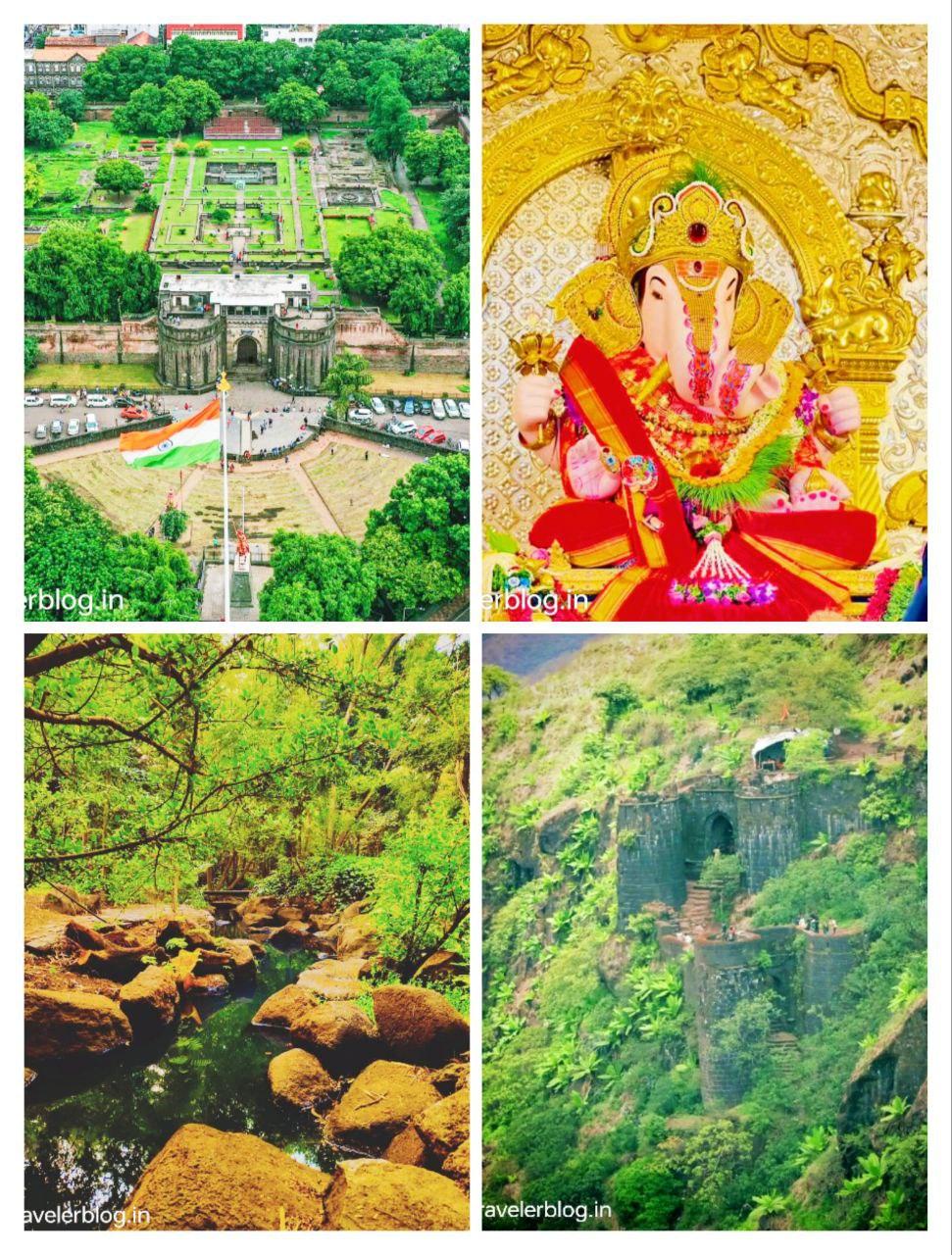
1 thought on “The 5 Best Places to Visit in Pune”